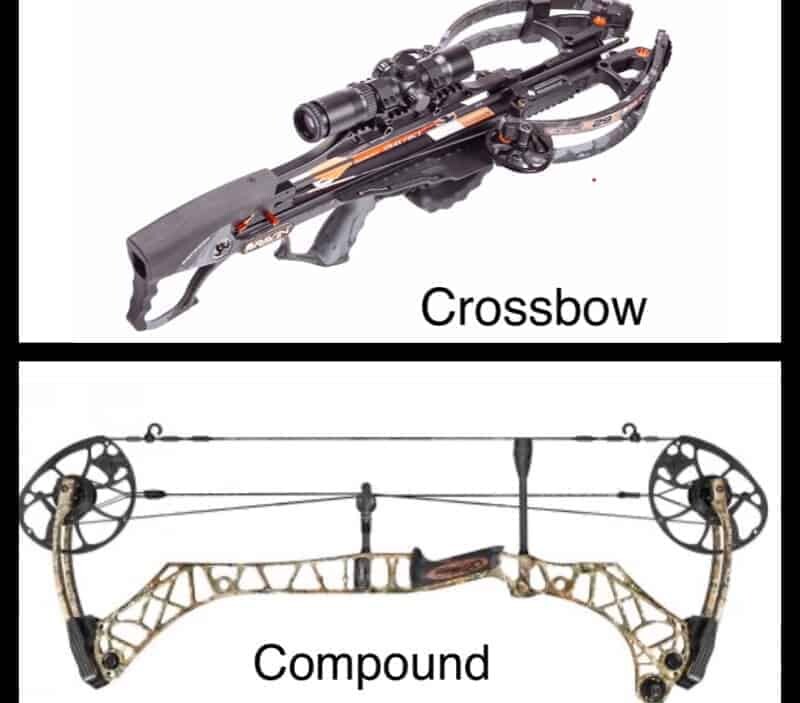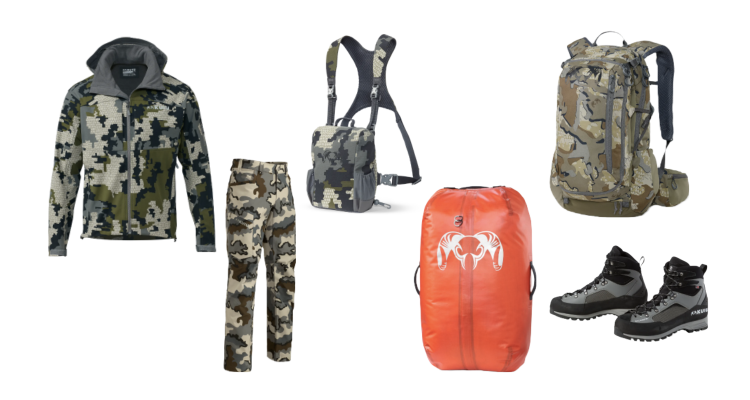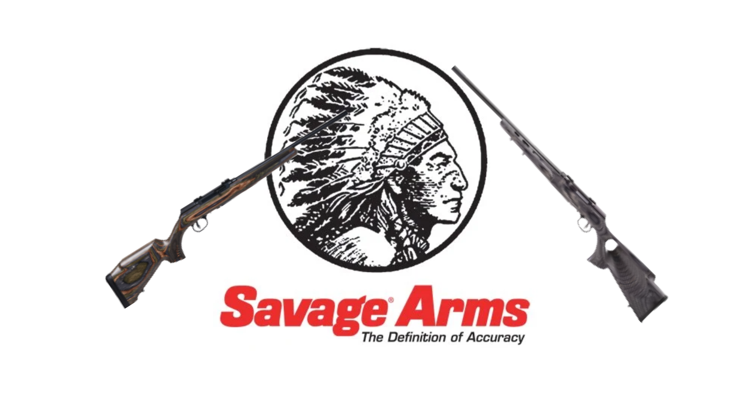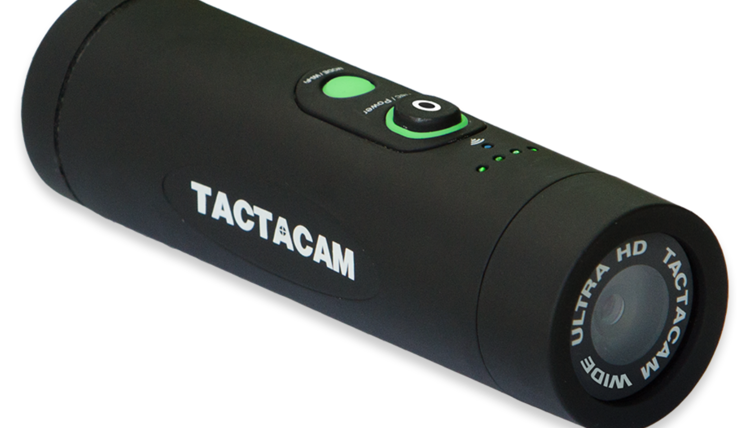In recent years, the issue of crossbows vs. compound bows has been addressed repeatedly. Now that crossbows are legal to use during archery season in most states, it’s likely the debate will never end.
The primary question asked is whether crossbows are more powerful than compound bows. My answer: The average crossbow does produce slightly more kinetic energy than the average compound bow. Since kinetic energy is what we refer to as “power,” then the answer to the question is yes, a crossbow is more powerful.
Why is a Crossbow More Powerful?
The main difference between the two is that a crossbow can be obtained with much higher draw weight. Even the least expensive, most basic crossbow is usually around 125-pound draw weight in comparison to the average compound bow being 60-pound draw weight. In the past, many argued that because compound bows had more string time (draw length) compared to a crossbow’s power stroke (the distance that the crossbow’s string travels from fully the cocked position to its rested position after the shot) meant that the compound would come out ahead in regard to performance. And yes, in the past this was true, but not today — not with modern crossbows.
This has especially become evident with the development of the reverse-draw-style crossbows which allow a crossbow to have an even longer power stroke coupled with high draw weights. Some will argue that a 70-pound compound bow with a 30-inch draw will out-shoot a 70-pound crossbow, and they are correct — but it is not a fair comparison. Why, you may ask? First, no one shoots a 70-pound crossbow. As I stated earlier, most crossbows start at 125-pound draw. Secondly, the average bow hunter has a 28-inch draw length (truth be told, probably shorter). Since you can now get crossbows that far exceed 150-pound pull with a much longer power stroke, there really is no argument to be had there.
>>>RELATED: 500 FEET PER SECOND CROSSBOW!
The Reality of Hunting With a Bow or Crossbow
When it comes to hunting with either a compound bow or a crossbow, it still all comes down to making an ethical shot. Yes, a crossbow has a slight power advantage, but how does this relate to practical application in a hunting scenario? The short answer is, it doesn’t. Most hunters using either method should not be shooting at an animal beyond 40 yards. Arrow and bolt placement is what will win out in the end when it comes to harvesting an animal in the most efficient and ethical way.
Can you harvest a deer beyond 40 yards? Of course you can, but there are so many variables when it comes to shooting beyond that point using either method. I am much prouder when I make a shot within 20 yards, knowing that the deer, or whatever animal I am hunting, had no idea I was there. That is the challenge of archery hunting. Yes, I have harvested deer beyond 40 yards, but a hunter is taking a lot of chances when they choose to do so. All the animal has to do is take one step or turn as you release the arrow or bolt and you may find yourself in a precarious situation. Either missing (which is the best-case scenario) or injuring the animal.
Keys to a Successful Hunt With Either a Crossbow or Compound Bow
When hunting with either kind of bow the main objective is to be prepared for the hunt. The only way I know to prepare is by practicing. Using a crossbow with a scope does require less practice than with a compound bow, but not by much. Most people I see shooting a crossbow shoot off of a rest and never practice shooting freehand. Anyone who has hunted long enough knows that you will not always have something to rest or lean on. I honestly believe that is the one advantage that a compound bowhunter has over a lot of crossbow hunters. Bow (traditional or compound) hunters do not use a rest and therefore practice every scenario they can think of in preparation for the hunt. Crossbow hunters should go about their preparations the same way. Practice from a sitting position, standing, and from less-than-perfect angles. If you do not practice it, you will not be prepared for it when it happens.
>>>RELATED: 15 Affordable Cellular Trail Cameras Under $200
Compound Bow or Crossbow?
Even though I think it’s quite evident that a crossbow is more powerful than a compound bow, that doesn’t mean I believe one is better than the other. With either, you are drastically limited in comparison to any modern firearm. What it really comes down to is which one you are more comfortable using. Each has its own advantages. For example, you are much more likely to get a second shot with a compound bow versus a crossbow due to the ease of reloading and because compound bows tend to be quieter. On the other hand, you can draw a crossbow and leave it at full draw until the shot. While using a compound bow (unless it is equipped with a draw-lock device) hunters must pick the right moment to draw on their quarry and physically keep the bow drawn until the release of the arrow.
There is no doubt that once you set up a crossbow, hunting with it requires less know-how and practice, but not enough to be a complete game-changer. I’ve known many hunters that went out and bought a crossbow as soon as they became legal to use during archery season, only to find out that it wasn’t as easy as they thought it would be. A slightly easier method of hunting will never replace patience and knowledge.
And if you think either method is easy, pick up a recurve or a longbow. Believe me, you will soon be humbled!
Related Questions
Should I buy a crossbow with recurve limbs or a compound?
To be honest, I think this is a completely subjective question. Either will do the job if you do your job. Compound crossbows tend to be, on average, faster and quieter, but that does not mean they are better. I would suggest you research both and shoot both to come to your own conclusion.
Can a person still shoot fixed blade broadheads out of a fast crossbow?
You most certainly can. The one advantage that mechanical (crossbow-specific) blades have over fixed blades is that they will pretty much fly like a field point. Regardless of what type of broadhead you choose to shoot, it’s imperative to practice with them and make sure they fly the same as your practice tips. If they don’t, you need to just sight in your bow of choice with those broadheads. My broadhead of choice these days is Thorn Broadheads by Thorn Archery. These are expandables that fly exactly like a field point. These are the first expandables that I’ve found that fly exactly like a field point.
What case should I pick if I have a new bow?
It’s a tough question to ask because there are so many great options out there. It’s important to see what’s important to your style of travel, and which case fits best with your bow and bow gear. In case you want to do some additional research, we have a great blog summarizing the 15 Best Bow Cases for this year!







